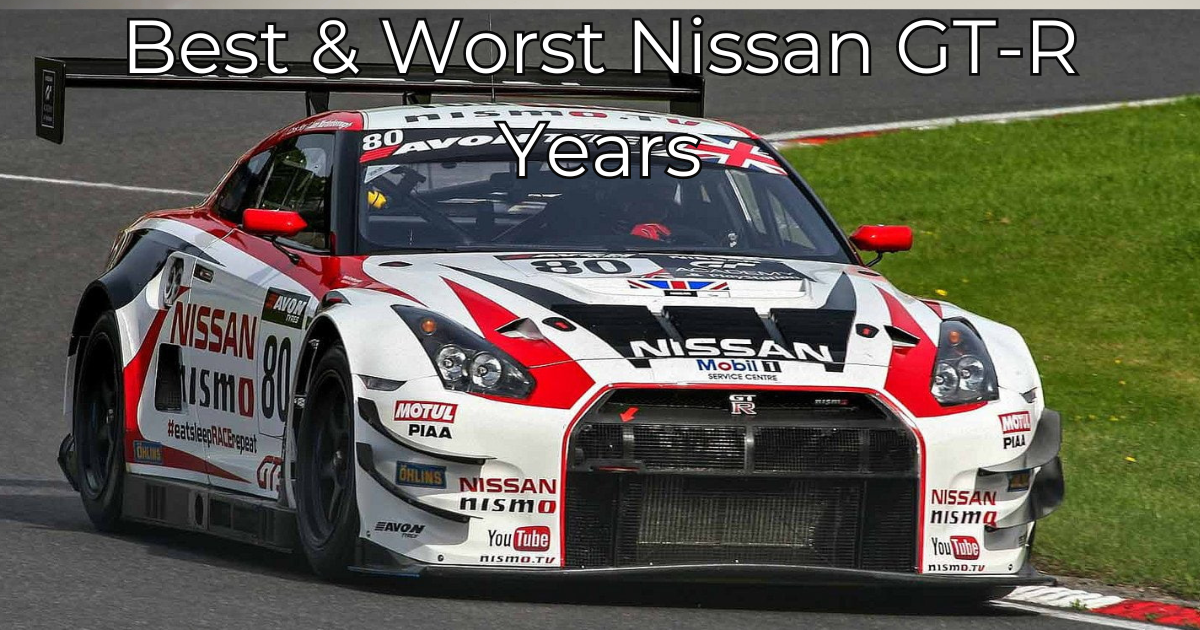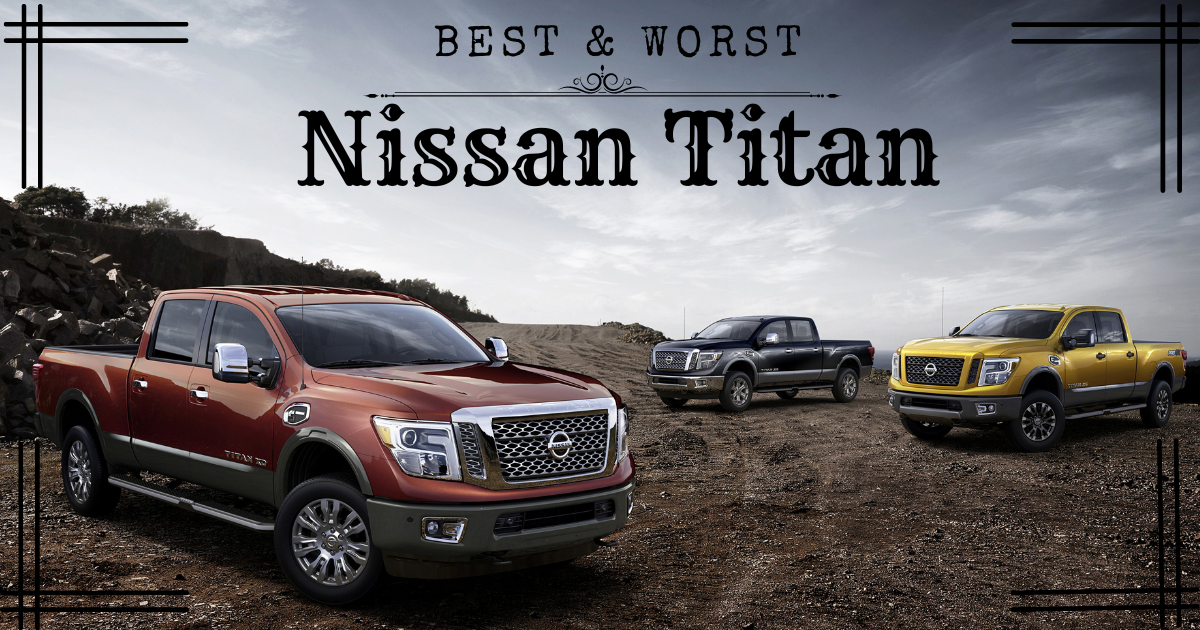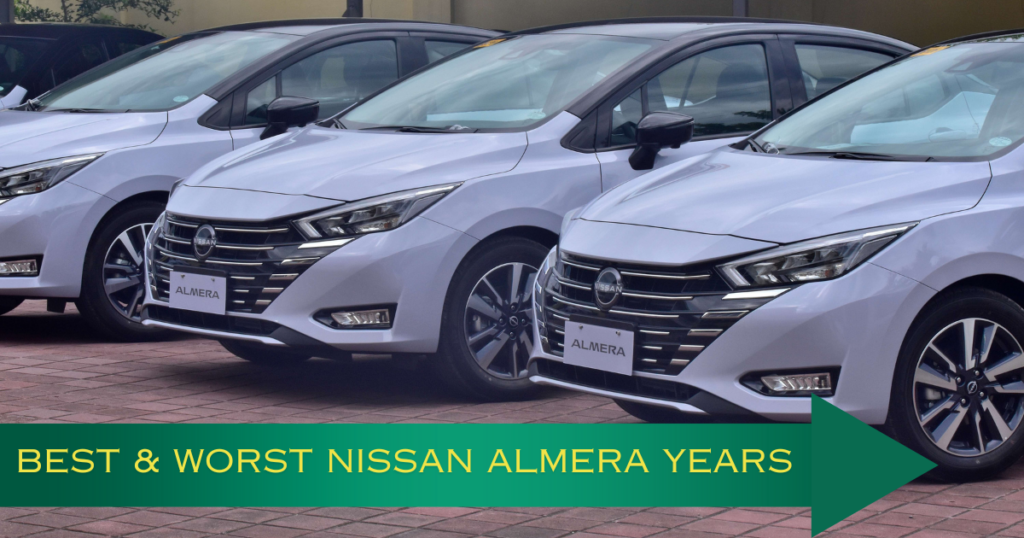
From its introduction in 1995, the Nissan Almera dominated the compact vehicle segment. It has changed significantly over time, with every new generation contributing their own special traits and advancements.
Car lovers continue to favor the Almera despite the revisions because of its affordable price, practicality, and dependable performance. Like any car, there have been years that have performed better than others in terms of dependability and general satisfaction.
This post will examine the top and worst Nissan Almera model years, highlighting the salient characteristics and technical details that elevate or detract from each model.
The worst years to avoid the Nissan Almera are 1995 – 1999 and 2010 – 2012. The best years to buy the Nissan Almera are 2000- 2006, 2013, 2014, and 2015 to current year’s models.
Worst Nissan Almera Years to Avoid
Even though the Nissan Almera has a solid reputation for dependability, there are a few model years you should probably avoid. Below, we’ll examine the years of the Nissan Almera that are not recommended and explain why.
1995 – 1999 Nissan Almera
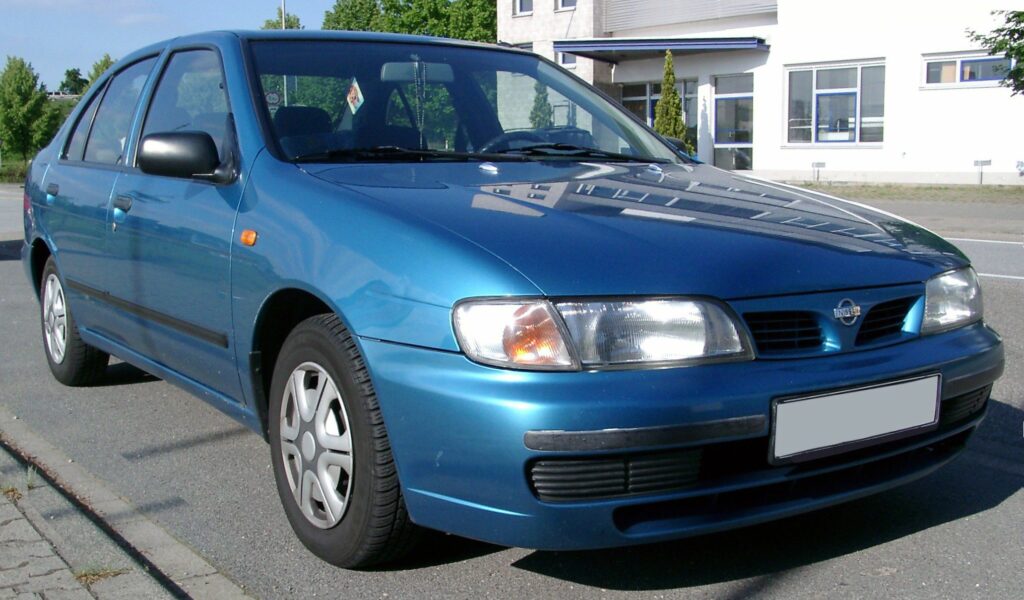
The first-generation Nissan Almera, which ran from 1995 to 1999, has a reputation for being extremely unreliable. This version of Almera is a dangerous bet for dependability-conscious consumers since it routinely rates low-reliability data compiled by the industry.
A major drawback of the original Almera is its powertrain. The timing chain is a common source of complaints from owners and, if left unattended, can lead to catastrophic engine failure. The Almera also has a history of engine issues, including overheating, caused by a faulty head gasket.
The first-generation Almera has been the subject of multiple safety recalls, which adds to the vehicle’s unreliability. In 1997, Almeras was recalled because of an issue with the fuel pump that could lead to engine stalling.
Another recall of the Almera occurred in 1998 due to a potential rear-end collision, which caused an issue with the brake lights. Crash test results for the 1995–1999 Nissan Almera are notoriously bad. The Almera scored a dismal two stars for protecting adult occupants and a dismal one star for pedestrians in Euro NCAP crash tests.
Other typical problems with Nissan Almeras from 1995 to 1999 include:
- Easily damaged, which results in an unsteady ride and unresponsive handling.
- Many people have complained about problems with the transmission, specifically changing and slipping gears.
- Dashboard lighting and wiring do not work properly due to issues with the electrical system.
All things considered, the Nissan Almera from 1995 to 1999 is the worst car range with a long list of safety recalls, low crash test ratings, and many electrical and mechanical problems.
2010 – 2012 Nissan Almera
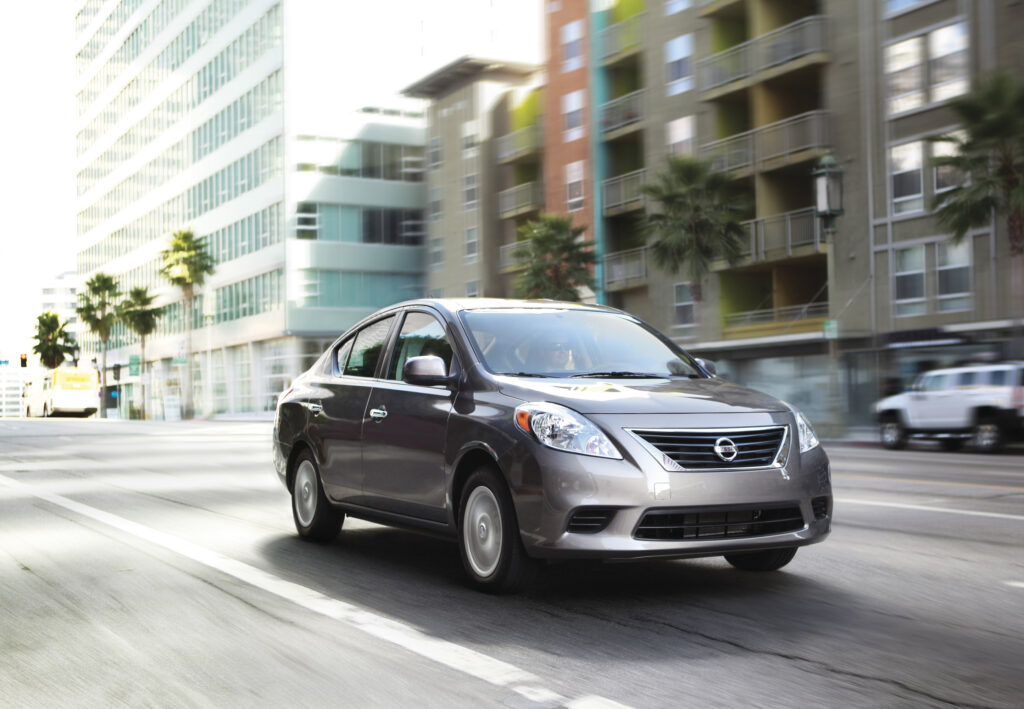
Another Nissan Almera model year with a bad reputation for reliability and problems is the 2010–2012 model year. The transmission is a typical point of failure for the Nissan Almera from 2010 to 2012.
Many people have complained that the gearbox slips or fails, which is a major safety concern. Furthermore, reports of electrical faults, suspension system problems, and engine failures have been received. The safety recalls for the Nissan Almera from 2010 to 2012 are another big issue.
Over 200,000 Almera vehicles were recalled by Nissan for possible airbag system problems. The airbag system could not deploy correctly in a collision, which increased the likelihood of serious injury or death, prompting the recall.
Over 50,000 Almera vehicles were recalled by Nissan for a problem with the steering wheel that might come loose while driving. The driver’s ability to maintain control of the vehicle may be compromised, leading to an elevated risk of collision.
Additional typical complaints about the Nissan Almera from 2010 to 2012 include concerns with the installation of brakes, air conditioner, and paint. Seats and dashboards, which can get worn or damaged over time, are another area of concern that many owners have mentioned. Reliability problems and safety recalls plague the 2010–2012 Nissan Almera generation.
There are certainly happy owners out there, but there have also been plenty of people who have had major issues with these vehicles’ transmissions, engines, and other vital systems. Before buying a used 2010–2012 Nissan Almera, make sure you check it out thoroughly and conduct your research.
Which Nissan Almera Years Are Most Reliable?
Reliability is frequently one of the most important things to take into account when buying a secondhand car. The Nissan Almera’s most dependable years will be examined in more detail below, with an emphasis on dependability data and user reviews.
2000 – 2006 Nissan Almera
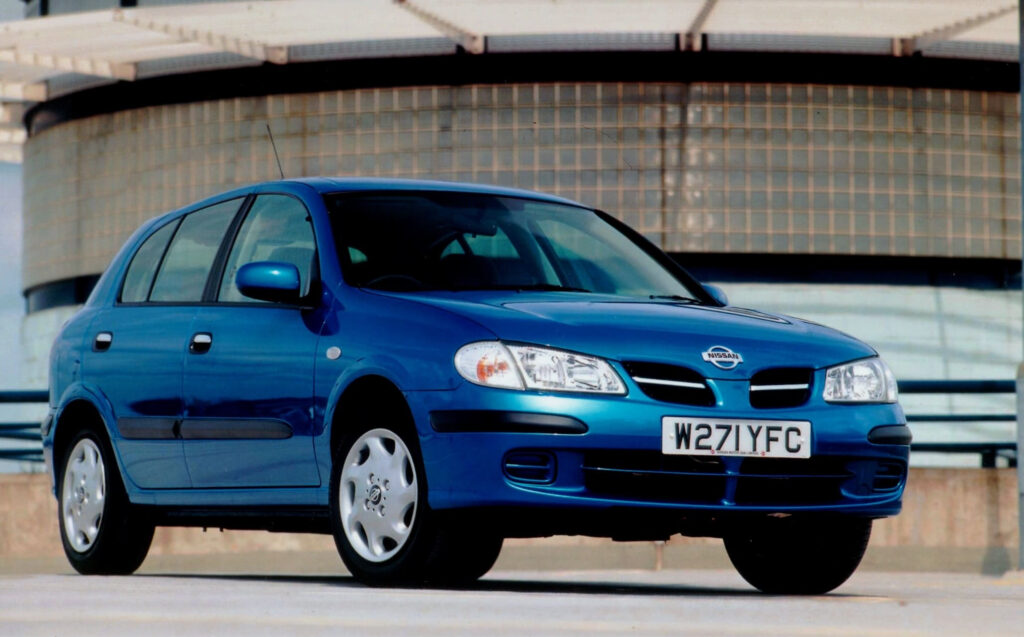
Many consider the 2000–2006 model year of the Nissan Almera, the second generation, to be among the most dependable versions of this car. The dependability, low operating costs, and practicality of this Almera generation were well-known.
There are a lot of reasons why the second-generation Almera is so dependable. The vehicle’s design is simple yet functional; it has a strong suspension and steering system and an easy-to-maintain engine. This lack of complexity makes fixing and maintaining things much simpler.
It misses out on cutting-edge amenities and technologies found in contemporary automobiles. Although it may appear to be a drawback, reducing the number of electronics and systems reduces the likelihood of problems, which in turn reduces the frequency and severity of repairs and maintenance requirements.
If you are searching for a dependable and functional vehicle, the 2000–2006 Nissan Almera is a great pick. With regular servicing, this Almera generation should last for many more years of dependable service.
2013 Nissan Almera

The third-generation Nissan Almera debuted in 2013 with improved features and technology over its forerunners. The 2013 Almera has been well-received for its dependability and longevity.
Reviews from previous owners and industry statistics indicate that this version of the Almera is quite reliable. Airbags, anti-lock brakes, and stability control are just a few of the current safety features that make this vehicle a safer choice for drivers.
The 2013 Almera also features a strong and economical engine and a continuously variable gearbox (CVT), making driving a breeze. This synergy improves the vehicle’s dependability and fuel economy, reducing gas prices.
The 2013 Almera has more sophisticated technology and safety measures, but the second-generation model is renowned for its ease of maintenance and straightforward design. Additional high-tech infotainment and convenience features include:
- Display via touchscreen
- Bluetooth wireless technology
- Backview monitor
2014 Nissan Almera
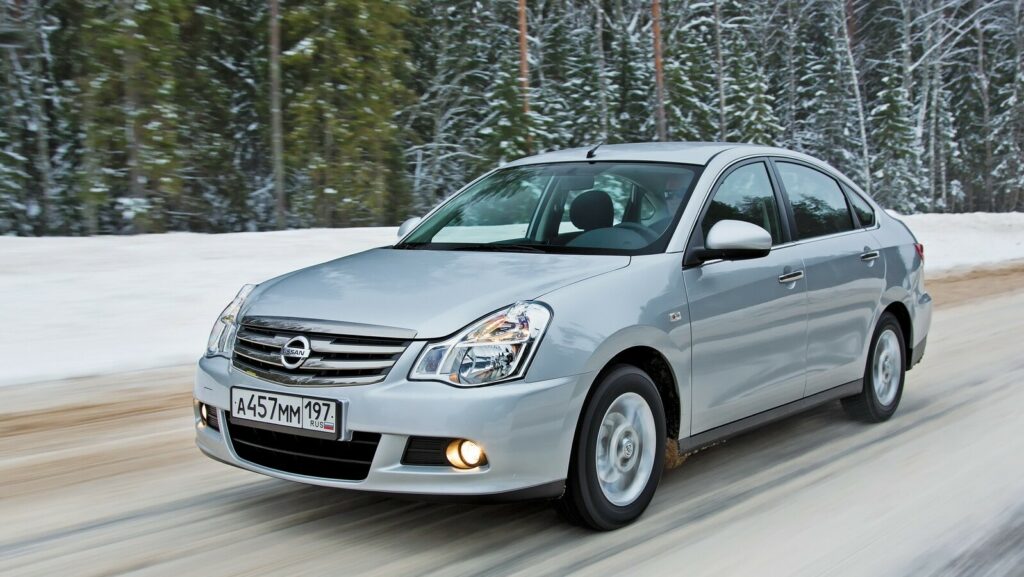
A further model year that displays remarkable durability and reliability is the 2014 Nissan Almera. Despite the lack of major updates, this model year is widely regarded as dependable. Thanks to its cutting-edge technology, this generation is dependable thanks to features like electronic stability control, brake aid, and traction control.
A more economical engine means a lower total cost of ownership. Its simplicity and lack of frills make it easier to fix and maintain, which in turn increases its lifespan and decreases the probability of breakdowns. Anyone looking for a dependable and functional little car would do well to consider the 2014 Almera due to its roomy cabin, pleasant ride, and outstanding reliability statistics.
(2015 – Present) Nissan Almera
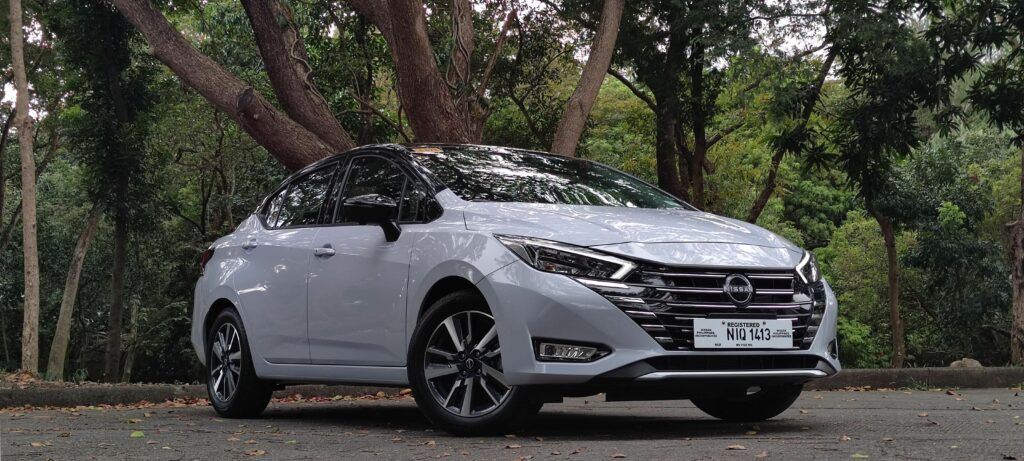
Consumer reviews and reliability metrics show that this latest generation of Almeras is quite durable and dependable. The spacious cabin and large trunk were the primary design goals when developing the three-box car. From the inside out, it appeared to have been constructed.
The (2015 – Present) Almera Sedan was one of several models introduced by Nissan for certain markets, as was the case with the majority of automakers. The South-East Asian market was the target for its introduction.
There were five seats available inside the Almera Sedan, and the back passengers had ample space for their legs and heads. It had an air conditioner and vents for the backseaters, as well as a separate controller for the backseat fan.
As part of the basic equipment, you have a Bluetooth connection, steering wheel controls, and power windows. A 1.5-liter gasoline engine was the sole powertrain option; it came standard with a 5-speed manual transmission but could be outfitted with an automatic as an option at the highest trim level.
With more ground clearance than a standard sedan, the front McPherson suspension and rear trailing arms were designed for rougher terrain. The modern technology in the 2015 – Present Almera is another thing that makes it very reliable.
What are the Common Nissan Almera Problems
Although the Almera is regarded as a dependable car overall, owners have noted a few recurring issues over time. The common issues with Nissan Almera models are listed here so you can better prepare for what to expect.
- Hissing Sounds coming from the motor.
- The vehicle seat quickly wears out, and the immobilizer light is on.
- Timing chain issue.
- Issues with the electric windows.
- Engine management alert.
- Streamlined headlamps.
- Self-releasing hand brakes.
Brief Wrap Up
Finally, if you want a Nissan Almera that will last, seek one that is either from 2000 to 2006, 2013 or 2014, or 2015 or later. There have been reports of troubles with earlier models (1995–1999) and more recent ones (2010–2012). Before you buy a secondhand Almera, make sure it doesn’t have any of the typical issues, such as a noisy engine, worn seats, or electrical difficulties.

